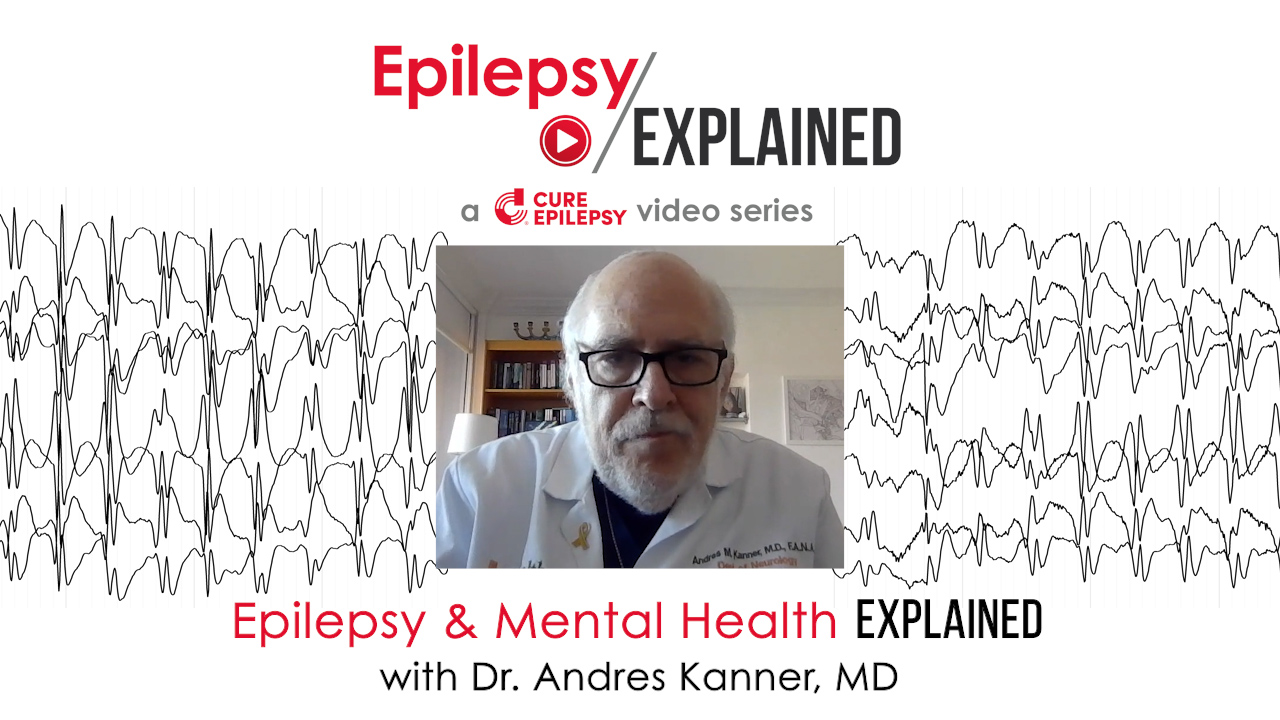< Back to Epilepsy Basics Forward to Diagnosing Epilepsy >
Complications of Epilepsy
In addition to seizures, people with epilepsy may experience other medical conditions and challenges. On this page we’ll review important information that people with epilepsy should be familiar with:
Please note that some of these topics may be upsetting or worrying to read; however, we believe it is important for people with epilepsy (and their parents/caregivers) to be aware of and understand this information so you can work with your neurologist or epileptologist to mitigate and manage the risks as best as possible.
Seizure Emergencies
While all seizures are significant, certain types of seizures require immediate medical attention – these are called seizure emergencies. Although rare, seizure emergencies can be life-threatening, which makes it critical to seek medical care to avoid long-term brain damage.1
Status Epilepticus
Status epilepticus (SE) is a medical emergency in which a seizure lasts for a prolonged period. It occurs because the mechanisms that usually stop a seizure fail, or because mechanisms start which lead to abnormally prolonged seizures.
Generally, SE is defined as seizures that last 5 minutes or longer, OR when a person with epilepsy experiences more than one seizure within 5 minutes without a break or recovery in between seizures.2
However, in 2015, the International League Against Epilepsy (ILAE) defined the time periods for SE as:
- 5 minutes for generalized tonic-clonic seizures
- 10 minutes for focal seizures
- 10 to 15 minutes for absence seizures
Though rare, SE is considered the most common neurological emergency. As noted above, you should seek medical care for any seizure lasting more than 5 minutes. SE has a high mortality rate and must be addressed by a medical professional quickly. Delays in medical care can reduce the effectiveness of the treatment.3
People without active epilepsy can acquire a condition known as NORSE, or new-onset refractory status epilepticus, most often from autoimmune or CNS disorders. In some cases, a febrile infection can also cause a refractory (resistant to treatment) SE known as FIRES, or febrile infection-related epilepsy syndrome. FIRES is a subcategory of NORSE, and while both can occur at any age, they are most prevalent in school-age children and older adults. NORSE and FIRES are clinical presentations; they are not a specific diagnosis. You can learn more about NORSE in this Seizing Life episode.
Seizure Clusters
Considered to be an intermediate between a single seizure and status epilepticus, seizure clusters (also referred to as acute repetitive seizures (ARS), seizure flurries, or crescendo seizures) are a medical emergency that is broadly characterized by two or more seizures within 24 hours.22 Like all things in epilepsy, seizure clusters can vary greatly from person to person, from the type and severity of the seizure to the number of seizures and how long they last. Patients with a history of seizure clusters have an increased risk for hospitalization, status epilepticus, and even SUDEP. 22
Epilepsy and Mortality
Mortality (death) rates among people with epilepsy are three times the rate of the general population, and sudden death rates are more than twenty times higher. While many of these deaths are the result of the underlying etiology (ex. tumors, strokes), people with epilepsy may experience early death from accidents, status epilepticus, or SUDEP.
Comorbidities
Comorbidity is when a primary medical condition such as epilepsy is associated with one or more additional conditions such as anxiety and depression, migraines, or autism spectrum disorder. Sometimes, comorbid conditions can impact a person’s quality of life more than the seizures themselves.8 For example, a person may have one seizure every six months, but they may suffer from depression that significantly affects their quality of life. Comorbidities are found in as many as 84% of people with epilepsy.9
Psychiatric Disorders: Anxiety and Depression
Approximately 10-25% of people with epilepsy experience generalized anxiety disorder, commonly referred to as anxiety. It can be related to a variety of situations, such as anxiety after a seizure or worry that a seizure will occur at work, in school, or even while driving.10
In addition to anxiety, depression is one of the most common comorbidities seen with epilepsy and affects approximately 6-30% of people with epilepsy.11 Societal stigma around epilepsy, side effects from anti-seizure medications (ASMs), or disruptions in areas of the brain responsible for regulating mood can all be a source of depression. It may occur inter-ictal (between seizures) or pre-ictal (occurring a few hours before a seizure), or as a side effect from ASM’s. People with depression may have a loss of appetite, low energy, and sleep disturbances.
Anxiety and depression are important to recognize and treat – if left untreated, they can significantly impact your quality of life. If you or a loved one with epilepsy experience anxiety or depression, speaking to a medical professional such as a neurologist, psychologist, or psychiatrist may help you address these issues early, preventing further mental health issues.
Learn more about Anxiety and Depression associated with Epilepsy »
Migraines
People with epilepsy are twice as likely to suffer from migraines as compared to people without. Research has shown that up to 79% of people with epilepsy experience headaches, including migraine (<25%) and tension-type headaches (TTH) (<40%). Migraines and headaches can occur in the early ictal, ictal, and post-ictal phases of a seizure, but there is no clearly identified relationship between seizure/epilepsy type and migraine. Certain ASMs, which were formerly known as antiepileptic drugs (AEDS) are effective in treating both epilepsy and migraine.
Autism Spectrum Disorder
Individuals with epilepsy are slightly more likely to have autism spectrum disorder; it is estimated that over 30% of people with epilepsy meet the diagnostic criteria for autism.12 What’s more, approximately 30% of people on the autism spectrum experience seizures. Researchers believe this relationship may exist due to common underlying mechanisms in the brain.
Learn more about the Autism-Epilepsy Connection »
Other Neurological Disorders
In addition to the comorbidities listed above, conditions such as dementia, attention deficit hyperactive disorder (ADHD), and stroke are more common in people with epilepsy, compared to those without.13, 14
Stroke
Adults with epilepsy are more likely to have a stroke as compared to those that do not have epilepsy: up to one-third of adults 45 years of age and older with epilepsy may suffer from a stroke.18 Risk factors such as hypertension and heart disease in adults with epilepsy may be responsible for the higher risk of stroke. Blood thinners and ASMs can be used to manage the comorbid condition of stroke and epilepsy.
Strokes can cause seizures and epilepsy, as well: according to the CDC, 5% of people who had strokes also had one seizure and 7% developed epilepsy within 30 months.
Dementia
People with epilepsy are twice as likely to suffer from dementia conditions such as Alzheimer’s disease as compared to people without epilepsy.15 This could be because seizures can affect the part(s) of the brain responsible for creating memories and thoughts. Certain ASMs are useful in retaining cognition and may be useful in people with epilepsy that have dementia.16
Attention Deficit Hyperactive Disorders (ADHD)
Children with epilepsy are up to five times more likely to suffer from attention deficit hyperactive disorder (ADHD) as compared to children without epilepsy. Again, this could occur because the seizures may affect areas of the brain responsible for maintaining attention. Medication and behavioral therapy can be used to address ADHD in children with epilepsy.17
Memory and Cognition
Seizures can affect the parts of the brain responsible for thinking, planning, remembering, and language. Therefore, some people with epilepsy can experience problems remembering, staying attentive, or even finding the right words to use.20 ASMs may also affect memory and cognition, though that is not always the case.
Considerations for Daily Life
Epilepsy is a spectrum disorder, meaning its effects vary from person to person. For many, seizure freedom can be achieved using medication, diet, devices, surgery, or a combination thereof; for some, though, epilepsy can significantly impact their daily life. Because of these risks, people with epilepsy may need to take special care during common, everyday activities such as cooking, sleeping, or driving.19
Driving/Operating Heavy Machinery
In addition to the standard eligibility requirements for obtaining a driver’s license, people with epilepsy may also need to prove that they have been seizure-free for a state-determined length of time before they are eligible. You may also be required to send your state Department of Motor Vehicles (DMV) periodic medical reports to demonstrate they are still eligible for a driver’s license.
People with epilepsy should exercise extreme caution when driving or operating heavy machinery. If seizures impair your ability to drive, contact your medical provider to discuss the options available to you to help get your seizures under control. Do not engage in these activities if your license has been revoked, or if your doctor(s) have advised you to abstain from driving, as you may be liable for an accident caused by seizures.
Epilepsy Related Injuries
In addition to the physical and psychological effects of seizures, people with epilepsy may also be at risk for injuries during a seizure. Small injuries, such as bumps and bruises, cuts, or burns while cooking are common, though serious injuries can occur, too, depending on the setting (ex. on hard or slippery surfaces) or activity being performed (such as while driving or swimming). Falling on a hard surface, for example, can cause broken bones and head trauma.
The risk for these types of accidents is greatest in people with uncontrolled seizures. While people with epilepsy can and should engage in most activities that people without epilepsy do, there are additional steps that you can take to minimize the risk of injury:
- Avoid swimming or other recreational activities near water without one-to-one supervision
- Use skid-proof mats in the bathroom/shower to prevent slipping
- Keep your house, apartment, or bedroom floors clear of clutter, preferably with carpet for a soft place to fall
- Take note of when your seizures tend to happen, then avoid high-risk activities during those times
Related Content
References:
- Hantus S. Epilepsy Emergencies Continuum (Minneap Minn). 2016 Feb;22:173-190.
- Wylie T SD, Goyal A, et al. . Status Epilepticus. [Updated 2020 Sep 25]. In: StatPearls [Internet]. Treasure Island (FL): StatPearls Publishing: StatPearls Publishing; 2021.
- Glauser T, Shinnar S, Gloss D, Alldredge B, Arya R, Bainbridge J, et al. Evidence-Based Guideline: Treatment of Convulsive Status Epilepticus in Children and Adults: Report of the Guideline Committee of the American Epilepsy Society Epilepsy Curr. 2016 Jan-Feb;16:48-61.
- Eling P, Renier WO, Pomper J, Baram TZ. The mystery of the Doctor’s son, or the riddle of West syndrome Neurology. 2002;58:953-955.
- Knupp KG, Coryell J, Nickels KC, Ryan N, Leister E, Loddenkemper T, et al. Response to treatment in a prospective national infantile spasms cohort Ann Neurol. 2016 Mar;79:475-484.
- Devinsky O. Sudden, unexpected death in epilepsy N Engl J Med. 2011 Nov 10;365:1801-1811.
- Sudden Unexpected Death in Epilepsy (SUDEP). Available at: https://www.cdc.gov/epilepsy/about/sudep/index.htm. Accessed May 11.
- Thomas SV, Nair A. Confronting the stigma of epilepsy Ann Indian Acad Neurol. 2011 Jul;14:158-163.
- Seidenberg M, Pulsipher DT, Hermann B. Association of epilepsy and comorbid conditions Future Neurol. 2009;4:663-668.
- Jackson MJ, Turkington D. Depression and anxiety in epilepsy J Neurol Neurosurg Psychiatry. 2005 Mar;76 Suppl 1:i45-47.
- Kanner AM. Depression in epilepsy: prevalence, clinical semiology, pathogenic mechanisms, and treatment Biol Psychiatry. 2003 Aug 1;54:388-398.
- Besag FM. Epilepsy in patients with autism: links, risks and treatment challenges Neuropsychiatr Dis Treat. 2017;14:1-10.
- Keezer MR, Sisodiya SM, Sander JW. Comorbidities of epilepsy: current concepts and future perspectives Lancet Neurol. 2016 Jan;15:106-115.
- Sirven JI. Management of Epilepsy Comorbidities Continuum (Minneap Minn). 2016 Feb;22:191-203.
- Stefanidou M, Beiser AS, Himali JJ, Peng TJ, Devinsky O, Seshadri S, et al. Bi-directional association between epilepsy and dementia Neurology. 2020;95:e3241.
- Liu J, Wang LN, Wu LY, Wang YP. Treatment of epilepsy for people with Alzheimer’s disease Cochrane Database Syst Rev. 2018 Dec 20;12:Cd011922.
- Williams AE, Giust JM, Kronenberger WG, Dunn DW. Epilepsy and attention-deficit hyperactivity disorder: links, risks, and challenges Neuropsychiatr Dis Treat. 2016;12:287-296.
- Strokes May Lead to Epilepsy. Available at: https://www.cdc.gov/epilepsy/communications/features/stroke.htm.
- The Epilepsies and Seizures: Hope Through Research. Available at: https://www.ninds.nih.gov/Disorders/Patient-Caregiver-Education/Hope-Through-Research/Epilepsies-and-Seizures-Hope-Through.
- Kanner AM. Management of psychiatric and neurological comorbidities in epilepsy Nat Rev Neurol. 2016 Feb;12:106-116.
- https://www.ncbi.nlm.nih.gov/pmc/articles/PMC7920959/









